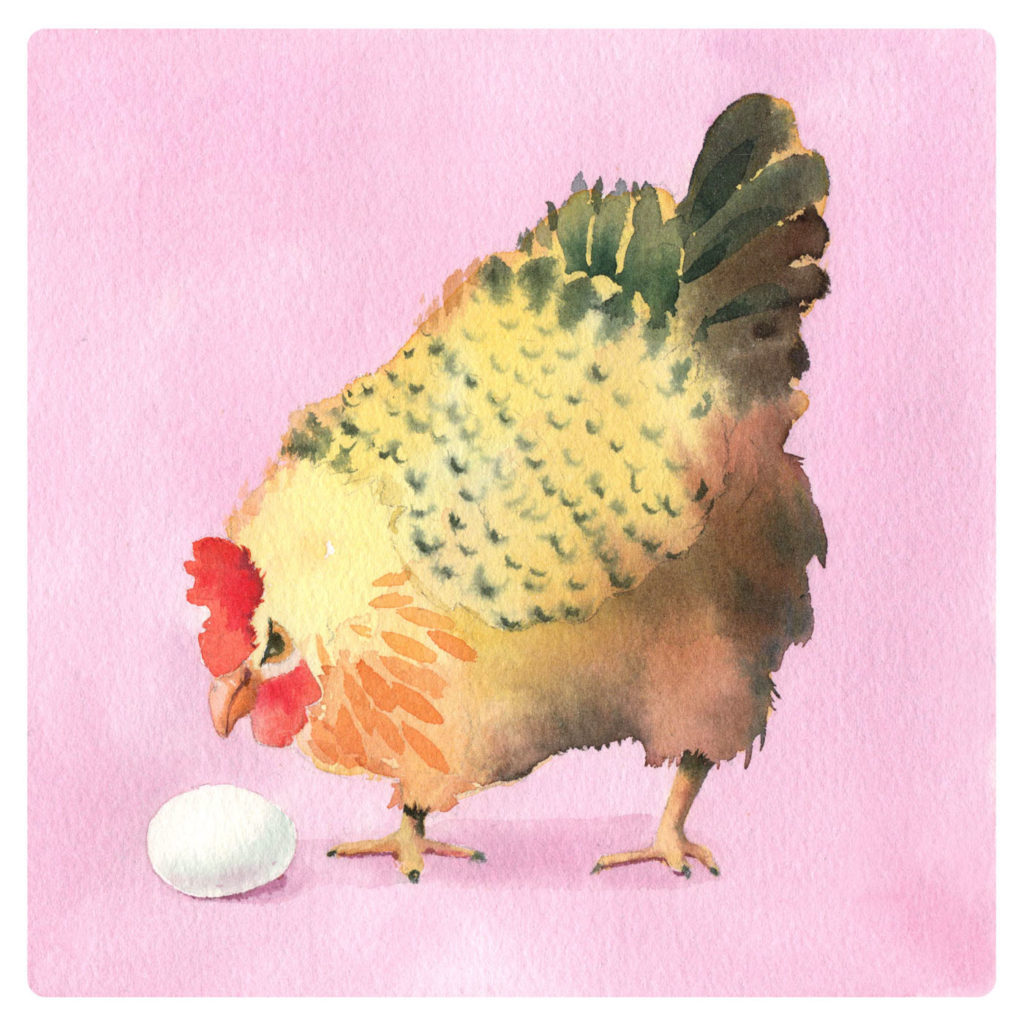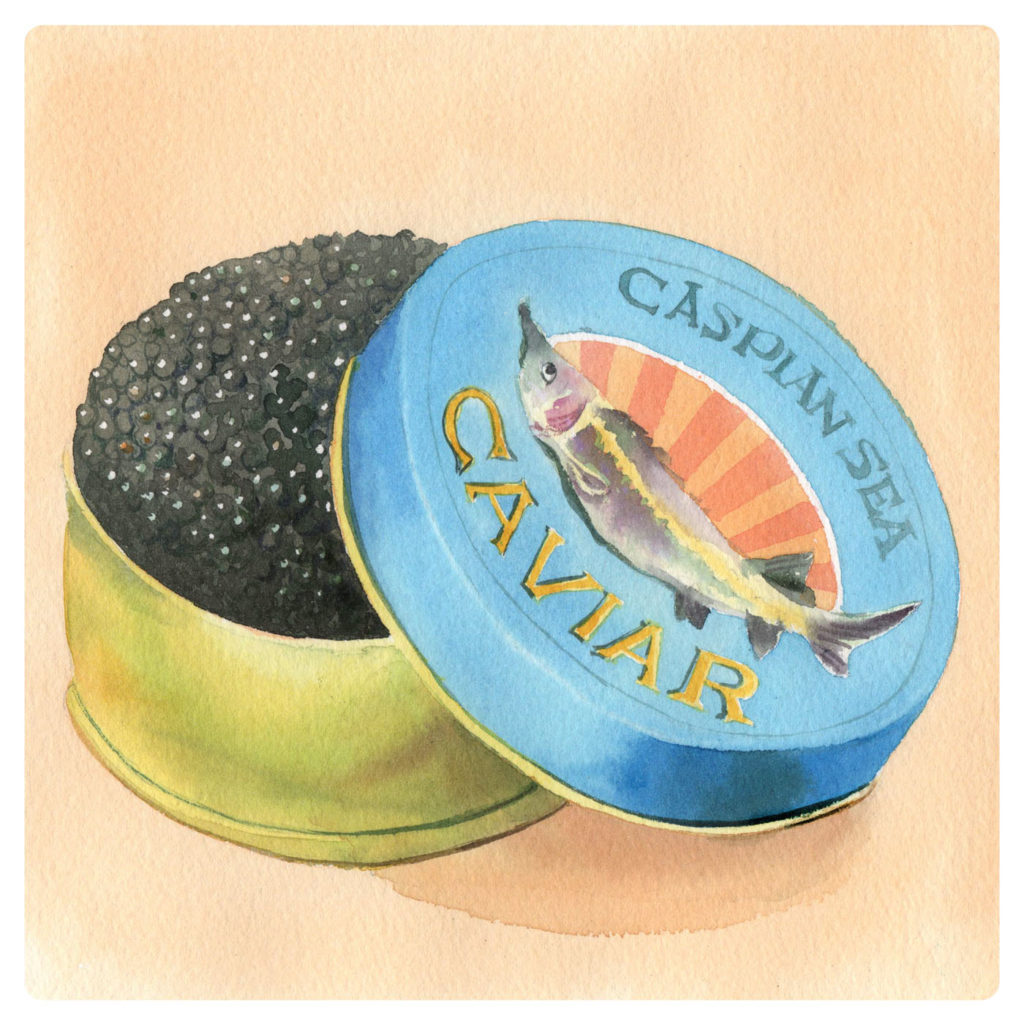Cracking the Code
An Exploration of the Incredible, Edible Egg
Consider the egg.
When hearing the word “egg,” most of us probably imagine breakfast—a versatile ingredient to eat as an omlette, sunny-side-up, poached or scrambled.
And when it comes to what that egg looks like, it’s likely the shell is white, green, brown or speckled. Some eggs are oval, while others are circular. Regardless of appearance, the egg is so ubiquitous, it’s often disguised behind other ingredients; it’s rarely the star of the dish.
It is, however, the star of this particular story. Here, we explore a variety of eggs, and how they’re eaten and enjoyed throughout the world.
The Hen
The taciturn egg, present and familiar.
This is commonly known as the “chicken egg,” but hen is the correct nomenclature. This particular egg is known for its gleaming white oval shape and bright yellow yolk.
The world’s egg supply primarily comes from poultry, meaning any domestic fowl raised for meat or egg production. According to the International Egg Commission, hens account for nearly ninety percent of global egg production. And when global demand increases, the burden lands on China and the United States, the world’s top egg producers.
China is the leading egg producer, with an annual output of over thirty million metric tons and growing. The Food and Agriculture Organization of the United Nations projects the number of egg-laying hens in China will grow with the country’s population. But it is yet to be determined if an increase in hens will sustain both a booming populace and international demand.
You are what you eat also applies to the egg. One can anticipate an egg’s flavor by the color of its yolk—an indicator of a happier, healthier hen. While certain hen breeds will naturally yield darker yolks than others, a deep-colored pigment indicates a balanced diet. For example, a deep orange yolk is said to come from a carotenoid rich diet. Carotenoids are natural plant pigments, found in vegetables of the dark green variety like spinach, kale and broccoli.

In the United States, hen eggs come in all kinds of preparations, typically in the morning hours. Prior to the Industrial Revolution, a larger evening meal—“supper”—was standard. When the laboring class went to work in the factories, they started eating prior to their work day and the morning meal concept took hold.
The meal was lighter than what would be found on a menu today—think coffee, a piece of bread, and juice. This changed in the 1920s when eggs and bacon were touted as the all-American breakfast.
The eggs-and-bacon scheme came from Edward Bernays, the notable public relations specialist of his day. Bernays was hired by the Beech-Nut Packing Company to push its surplus of bacon; he convinced a group of doctors to back bacon as the optimal breakfast food.
Eggs were chosen as a breakfast food, simply, because they are available early in the day, as hens lay them on a cycle and farmer is there to collect them. Bernays effectively strung together eggs—a morning yield—with a hearty side of bacon and the idea stuck.
In Chinese cuisine, the hen egg is far older and more multifaceted than Bernays’ eggs and bacon breakfast special. Some historians argue Chinese farmers essentially invented the idea of the domesticated fowl. Archeological evidence of farmsteads in China suggestion hens were domesticated around eight thousand years ago.
In that expanse of time, the egg has gone to exists outside the boundaries of “breakfast not served after 11 a.m.” Take the marbled—or tea—egg for example, which is reminiscent of the plainsong hard-boiled egg, but its preparation is far more thoughtful than boiling water and a dash of salt. To make tea eggs, an egg is boiled and then slowly simmered in a mixture made from black tea leaves and other spices. Often, the classic five-spice powder—anise, cinnamon, cloves, fennel seeds, and Sichuan pepper—is used to give the eggs a distinct taste. When the shell is peeled off, stains from the mixture give the egg a marbled look.
The Duck
Although a similar oval shape to a hen’s egg, duck eggs are larger and richer in flavor and have more useful properties for culinary pursuits. Hidden within the beige shell is a hefty yolk with higher levels of fat, Omega 3, and cholesterol.
Because of the higher cost of raising ducks coupled with a lower yield than the hen, duck eggs are more expensive than most free-range, organic hen eggs, which tends to limit their availability in stores and on menus in the U.S.
Duck eggs are a large part of the culinary landscape in some East and Southeast Asian cuisines as well. In some parts of China, duck eggs are salted in an elaborate process. Prior to being boiled, the egg is packed inside a clay or charcoal paste, salt and water to brine the shell. After being wrapped in paper or sealed in a bag, the egg is stored for several weeks, then washed and boiled.
Balut—a common food in the Philippines, Vietnam, Laos and Cambodia—is a fertilized egg that is incubated for a time, then boiled. The embryo begins to mature in the process; and upon biting into the egg, one might find a beak, soft bones, organics, and even feathers.
In the Western world, this is a controversial concept in terms of ethics as well as public health and safety. Despite being hard to swallow in other parts of the world, it is commonplace to find balut at a busy market in metro Manila, served with salt or chili on the side and an ice-cold beer.

The Ostrich
The ostrich has yet to elbow its way into the hen’s share of the egg market. While hens can be raised exclusively for eggs, ostriches cannot. Ostriches are primarily domesticated for meat production. Like the hen’s egg, an ostrich’s is also a pearl-hued oval. The resemblance stops there, as the latter is massive in comparison. Ostrich eggs can weigh up to three pounds and measure five inches long and six inches wide.
If an ambitious chef elected to use one, he or she would need a literal hammer to crack the egg’s shell. The shells are four millimeters thick, which is great for supporting the weight of the world’s largest bird, but not so easy for making breakfast.
The Quail
Quails exists on the opposite end of the poultry spectrum. They are about half the size of the hen, as are their eggs, but percentage-wise have a more substantial amount of protein.
A quail egg is roughly the diameter of a U.S. quarter. It tends to weigh around nine grams—it is noticeably smaller than the smallest hen eggs. However, its flavor is similar to hen eggs and can be used interchangeably; one would have to use about two to four quail eggs for every one hen egg.
A quail egg can pair nicely with beef tartare, or it could be the soft-boiled center piece of an Instagrammable avocado toast. In the Philippines, quail eggs are a street food known as kwek kwek. Shoppers might find the deep-fried quail egg sold one or two stalls down from the balut vendor at their local market. Quail eggs are also common in Chinese cuisine, and in Japanese bento boxes.

The Fish
Poultry eggs aren’t the only ones that make it to the dining table.
Sushi eaters may recognize roe as the tiny, crystalline balls clustered together on a tightly-packed serving of rice. And when cured and salted, fish eggs can be served as a delicacy in the form of caviar.
Caviar is considered a culinary delicacy. The unfertilized eggs of a sturgeon fish—one of the oldest families of fish still in existence—have been consumed for millennia. A dish very similar to caviar appeared in ancient Persian and Greek culture; the version consumed today is credited to Russian aristocracy. As caviar spread from Russian nobility to Europe’s social elite and beyond, its popularity contributed to the endangerment of the sturgeon.
Traditionally, the highest-quality caviar is harvested from the beluga sturgeon, native of the Caspian Sea. The eggs are harvested directly from the fish during their brief breeding season.
Today, caviar’s reliance on unsustainable production—thanks to toxic, polluted waters, overfishing and poaching—has caused many to question its place in modern cuisine. Regulation makes wild caviar difficult to acquire and is therefore expensive, making it a delicacy to some consumers.
The Turtle
The underground egg market spans from the waters of the Caspian Sea to the beaches of South America. One can find sea turtle eggs if they know where to look.
Like caviar, sea turtle eggs are also considered a delicacy. Many South American beaches are major hatching grounds for sea turtles during their nesting season. For locals in countries like Costa Rica and Mexico, collecting and consuming the eggs has been done generationally.
Since the shell is leathery and pliable, sea turtle eggs can be eaten lightly poached or raw, and are consumed for unique reasons. Some see a traditional dish or local cuisine, and others see an alternative to Viagra. The egg’s popularity in the underground aphrodisiac market has given rise in poaching. As a result, most species of sea turtles are now endangered.
Countries like Nicaragua, Costa Rica and Mexico have taken measures to improve their conservation efforts, but poaching laws are still largely ignored. In Mexico, possession of sea turtle eggs comes with a hefty prison sentence, but egg hunters take the risk.






Our comments section is for members only.
Join today to gain exclusive access.